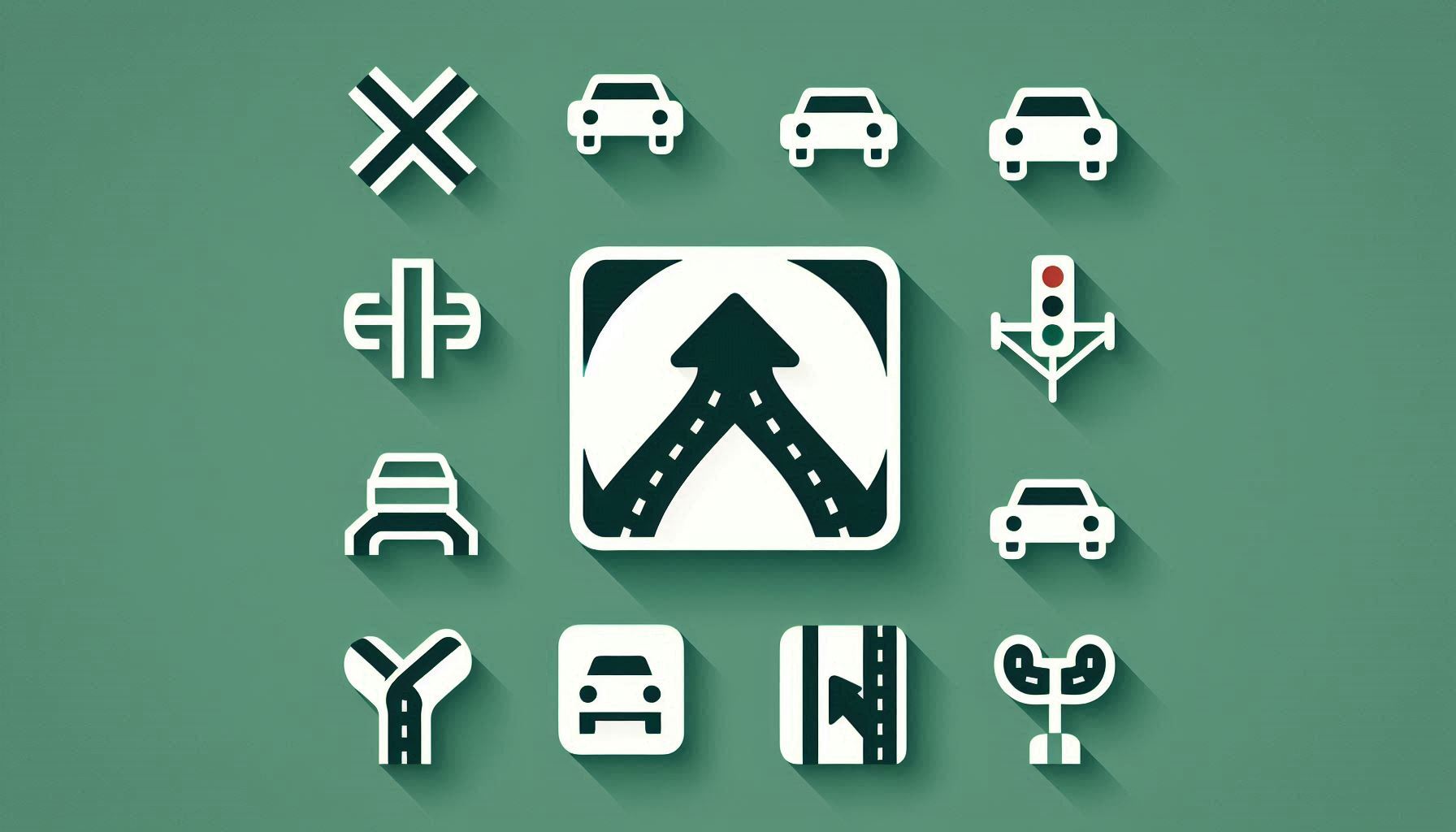Gap Acceptance at Non–Standard Unsignalised Intersections

Downloads
Non-standard unsignalised intersections are very common in European countries with old street networks. The major road often bends at an angle at the centre of an intersection, which makes the intersection non-standard. There are very few papers about the capacity analysis and headway values at these intersections, even though non-standard intersections are widespread not only in Europe but also in the rest of the world. Regarding the fact that priority at the non-standard unsignalised intersection (NSUI) differs from the standard unsignalised intersection (SUI) and the conflict flows, it can be expected that headways are not the same as those at the SUI. Consequently, the capacity at the NSUI differs from that at the SUI. This paper gives critical headway and follow-up headway values at 3-leg and 4-leg NSUI collected by on-field measurement. Recommendations for the values used for the capacity analysis are given, and recommended values are compared at SUI and NSUI.
Downloads
Bogdanović V, Ruškić N, Basarić V, Tanackov I. Capacity analysis procedure for four-leg non-standard unsignalised intersections. Promet – Traffic&Transportation. 2017;29(5): 543-550. doi: 10.7307/ptt.v29i5.2366.
Harders J. Die leistungsfähigkeit nicht signalregelter städtischer verkshrsknoten [Capacity of unsignalized urban intersections]. Bonn: Bundesminister für Verkehr; 1968.
Highway Capacity Manual, Chapter 17 – Unsignalized intersections. Washington, D.C.: Transportation Research Board of the National Research Council; 2000.
Highway Capacity Manual, Chapter 19 – Two-Way Stop-controlled intersections. Washington, D.C.: Transportation Research Board of the National Research Council; 2010.
Highway Capacity Manual, Chapter 20 – Two-way stop-controlled intersections Washington, D.C.: Transportation Research Board of the National Research Council; 2016.
Bogdanovic V, Ruskic N, Kulovic M, Han LD. Toward a capacity analysis procedure for nonstandard two-way stop-controlled intersections. Transportation Research Record: Journal of the Transportation Research Board. 2014;2395: 132-138. doi: 10.3141/2395-15.
Serbia. Serbian road signs manual. Belgrade: Ministry of Construction, Transport and Infrastructure; 2021. https://www.pravno-informacioni-sistem.rs/SlGlasnikPortal/eli/rep/sgrs/ministarstva/pravilnik/2017/85/1.
Road Research Laboratory. Research on Road Traffic. London; 1965.
Highway Capacity Manual. Washington, D.C.: Transportation Research Board of the National Research Council; 1985.
Highway Capacity Manual. Washington, D.C.: Transportation Research Board of the National Research Council; 1994.
Siegloch W. Die leistungsermittlung an knotenpunkten ohne lichtsignalanlagen [Capacity calculations at unsignalized intersections]. Series Strassenbau und Strassenverkehrstechnik. 1973.
Brilon W, Koenig R, Troutbeck RJ. Useful estimation procedures for critical gaps. Transportation Research Part A: Policy and Practice. 1999;33: 161-186. doi: 10.1016/S0965-8564(98)00048-2.
Hagring O. Estimation of critical gaps in two major streams. Transportation Research Part B. 2000;34(4): 293-313. doi: 10.1016/S0191-2615(99)00026-0.
Kittelson WK, Vandehey MA. Delay effects on driver gap acceptance characteristics at two-way stop-controlled intersections. Transportation Research Record. 1991;1320: 154-159. http://onlinepubs.trb.org/Onlinepubs/trr/1991/1320/1320-019.pdf.
Daganzo C. Estimation of gap acceptance parameters within and across the population from direct roadside observation. Transportation Research Part B: Methodological. 1981;15(1): 1-15. doi: 10.1016/0191-2615(81)90042-4.
Hewitt RH. Measuring critical gap. Transportation Science. 1983;17(1): 87-109. doi: 10.1287/trsc.17.1.87.
Hewitt RH. A comparison between some methods of measuring critical gap. Traffic Engineering and Control. 1985;26(1): 13-22.
Hewitt RH. Analysis of critical gaps by probit analysis. Strassenverkehrstechnik. 1993; 142-148.
Simon MK. Probability distributions involving Gaussian random variables. Springer; 2002.
Rossi R, Meneguzzer C, Gastaldi M. Transfer and updating of logit models of gap-acceptance and their operational implications. Transportation Research Part C. 2013;28: 142-154. doi: 10.1016/j.trc.2011.05.019.
Abhigna D, Brahmankar DP, Ravishankar KVR. Multi vehicle-type right turning gap-acceptance and capacity analysis at uncontrolled urban intersections. Periodica Polytechnica Transportation Engineering. 2020;48(2): 99-108. doi: 10.3311/PPtr.9744.
Zhou H, Ivan JN, Gårder P, Ravishanker N. Gap acceptance for left turns from the major road at unsignalized intersections. Transport. 2017;32(3): 252-261. doi: 10.3846/16484142.2014.933445.
Ma W, Zhao J. Investigating gap acceptance behavior at two-way stop-controlled intersections in China. Transportation Letters. 2020;12(3): 202-212. doi: 10.1080/19427867.2019.1567021.
Chen W, Liu Y. Gap-based automated vehicular speed guidance towards eco-driving at an unsignalized intersection. Transportmetrica B: Transport Dynamics. 2019;7(1): 147-168. doi: 10.1080/21680566.2017.1365661.
Li L, Gan J, Yang F, Ran B. A method to calculate the capacity of unsignalized intersection for connected and automated vehicles based on gap acceptance theory. 19th COTA International Conference of Transportation Professionals, 2019, Nanjing, China. 2019. p. 5600-5612. doi: 10.1061/9780784482292.482.
Gattis JL, Low ST. Gap acceptance at nonstandard stop-controlled intersections. 1998.
Kociánová A, Pitlova E. Critical gaps at unsignalized intersections with bending right-of-way. Communications. 2018;20(4): 69-75. doi: 10.26552/com.C.2018.4.69-75.
Pitlova E, Kociánová A. Determination of priority stream volumes for capacity calculation of minor traffic streams for intersections with bending right-of-way. Transportation Research Procedia. 2019;40: 875-882. doi: 10.1016/j.trpro.2019.07.123.
Ruškić N. Model for capacity analysis of non-standard unsignalized intersections. Ph.D. thesis. University of Novi Sad, Faculty of Technical Sciences; 2013.
Tian Z, et al. Implementing the maximum likelihood methodology to measure a driver's critical gap. Transportation Research Part A. 1999;33(3-4): 187-197. doi: 10.1016/S0965-8564(98)00044-5.
Copyright (c) 2022 Nenad Ruškić, Valentina Mirović

This work is licensed under a Creative Commons Attribution-NonCommercial-NoDerivatives 4.0 International License.




















